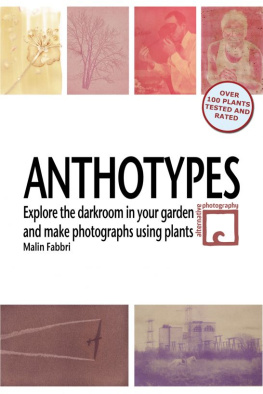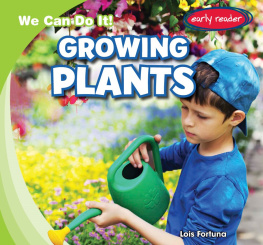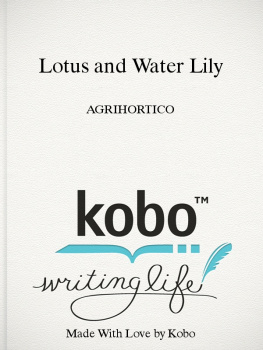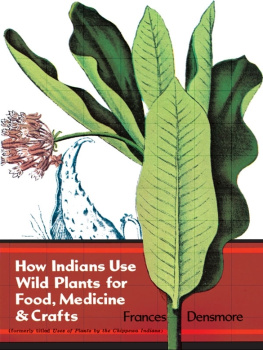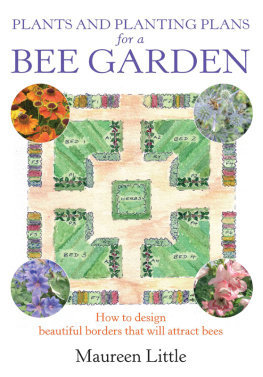Anthotypes - Explore the Darkroom in YourGarden and Make Photographs Using Plants
Malin Fabbri
Smashwords edition.
Copyright 2012 Malin Fabbri,AlternativePhotography.com
Other titles byAlternativePhotography.com
in paper format and eBook format:
Blueprint to cyanotypes
www.AlternativePhotography.com/cyanotypes
Alternative Photography: Art & Artists,Edition I:
www.AlternativePhotography.com/ArtAndArtists1
From pinhole to print:
www.AlternativePhotography.com/pinhole
Anthotypes:
www.AlternativePhotography.com/anthotypes
First published 2012.
Smashwords Edition, License Notes
This ebook is licensed for your personalenjoyment only. This ebook may not be re-sold or given away toother people. If you would like to share this book with anotherperson, please purchase an additional copy for each recipient. Ifyoure reading this book and did not purchase it, or it was notpurchased for your use only, then please return to Smashwords.comand purchase your own copy. Thank you for respecting the hard workof this author.
All rights reserved. No part of this publicationmay be reproduced, stored in a retrieval system, or transmitted inany form or by any means, electronic, mechanical, photocopying,recording, or otherwise, without the prior written permission ofthe publisher.
Cover design by Malin Fabbri.
Photography frontcover, top row, from left toright:
Red Geranium by Marydorsey Wanless, 2010
Tree in Snow by Jake Groenhof, 2010
Observer by Scott McMahon, 2010
Anthotype 07 by Silvino Gonzlez, 2011
Bottom left: Free Flight by Jalo Porkkala,2010
Bottom right: Horse, girl and housing estateby Rosemary Horn, 2009
Published by
Malin Fabbri
AlternativePhotography.com
Vikingagatan 10
113 42 Stockholm
Sweden
To Maximillian
and Ruben
- for a safer world
This sort of book is not possible to write onyour own. It will just not be as good without the contribution fromothers. I have many people to thank during the years I wrote it,and amongst those, especially the photographers and artists thatshared their own anthotyping experiences and made it so muchbetter. So, thank you Nancy Breslin, Hans de Bruijn, BeverlyConway, Dan Estabrook, Carol Golemboski, Silvino Gonzlez,Katherine M. Hill, Rosemary Horn, Jake Groenhof, Katja Krajnc,Nicole Lawrence, Sarah Lycksten, Scott McMahon, Ko Oosterwijk,Fabio Pasquarella, Jalo Porkkala, Martin Reis, Francis Schanberger,Nicky Thompson, Sarah Van Keuren and Marydorsey Wanless for lettingme use your images.
A lot of other people have been an inspirationin this project, from gardening enthusiasts to photo historians.Some who deserve a special mention are Elizabeth Graves for herunfailing enthusiasm and help with things both large and small, Dr.Mike J. Ware for pointing me to the right historical papers, thestaff at the National Library in Stockholm for digging them out, mymother and father for supplying petals from their garden, SannaFogelvik for helping out with illustrations, Peter J. Blackburn,Nancy Breslin, Francis Schanberger and Marydorsey Wanless forgiving feedback on the drafts and searching for typos, and - lastbut not least - my grandmother who sparked my interest in coloringwith plants.
Thank you! All of you.
Table of content
Chapter 1 - Introduction
Why a book on anthotypes? As a child mygrandmother used to take me along to a ladies groups where theydyed yarn. The event was a big gathering in the middle of a field,with a stack of dried plants, yards of yarn - some home carded -and a huge cooking pot would be boiling in the centre. Yarn wouldbe dipped in, colored and then hung on a line in the field to dry.I was fascinated. A colorless plant could produce a brilliantpurple, or a dull grass would dye the yarn bright red.
With my grandmothers yarn dyeing in the back ofmy mind I started to explore the plant kingdom. I started outtrying to dye cyanotypes - my first love in the alternativephotographic processes - using beetroot juice to turn the cyanotypeblue into pink. It worked. Years later, when I was pregnant, breastfeeding, pregnant again and breast feeding another round and had tostay out of the toxic fumes of a darkroom, I started searching fora non-toxic way to produce photographs. That is when I seriouslystarted researching anthotypes. My four baby years of researchwere the beginning of this book. I was absolutely thrilled when Icame across the anthotype photographic process and realized thatall this ancient dyeing knowledge could be used to producephotographs!
My grandmother passed away in 1991, beforemobile phones were commonplace and any ordinary people had heard ofthe internet. She would never have imagined that one third of theworlds population is estimated to own a digital camera (countingthe ones available on mobile telephones). Of those people, only afew have ever heard of anthotypes. In fact, before writing thisbook I only knew of five people including myself who had workedwith anthotypes. Now I am lucky to know a few more! Whilst Im notexpecting to change the world, I am hoping to convert a few of thephotographers interested in alternative photographic processes andwilling to experiment, to this wonderful, obscure, fun andenvironmentally friendly process.
Malin Fabbri, Stockholm, 2012
Chapter 2 - About the Author
Malin Fabbri grew up in Sweden. In her earlytwenties she moved to London to study Design, English andPhotography. In London she worked as a designer for videoproduction companies, design studios and big media names like Timemagazine and CNBC Europe.
She earned an MA in design studies at CentralSt. Martins School of Design, London. Her thesis concentrated onalternative photography and the research involved work withcyanotypes and other alternative photographic processes.
Finishing her degree and publishing her thesisfelt more like a beginning than an end to Malin. She decided tocombine her academic and practical experience and startedCyanotypes.com. A number of the artists who had helped her from thebeginning were interested in publishing their photographs on thesite and it has grown to include all alternative photographicprocesses in use by artists today.
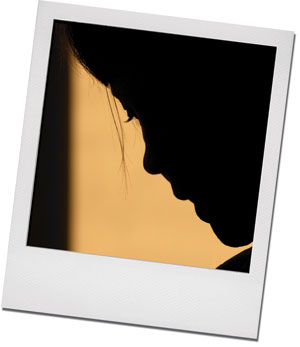
The website later changed its name to AlternativePhotography.com and now represents almost 400 artists, and continues to grow. Thewebsite still maintains its origins as a source of information andresearch for alternative photographic processes.
Malin actively manages the expansion of the siteas editor. She researches alternative photographic processes, makesher own prints and runs workshops.
She is the co-author of Blueprint tocyanotypes - Exploring a historical alternative photographicprocess and From pinhole to print - Inspiration,instructions and insights in less than an hour, the editor ofthe alternative photography art book Alternative Photography:Art and Artists, Edition I representing 115 artists working inalternative photographic processes today, and the author of thisbook, Anthotypes - Explore the darkroom in your garden and makephotographs using plants.
Malin lives and works in Stockholm with her twosons, Maximillian and Ruben.
Anthotype? A what?
Anthotype is a very delicate photographicprocess and an environmentally friendly way of making prints usingnothing other than the photosensitive material of plants found inthe garden, the flower market or in the wild. All you need to addis water, sunshine, inspiration and patience - a lot ofpatience!

